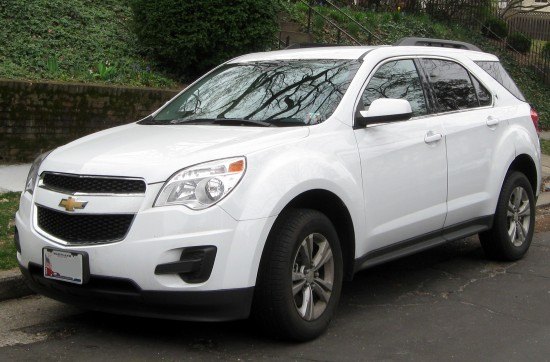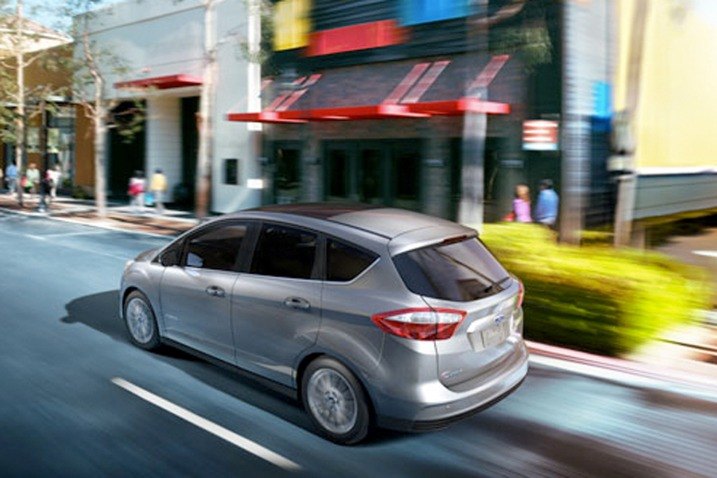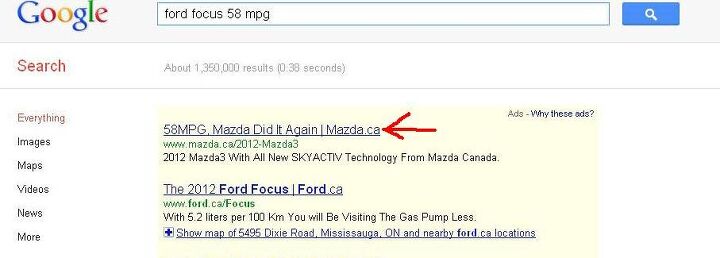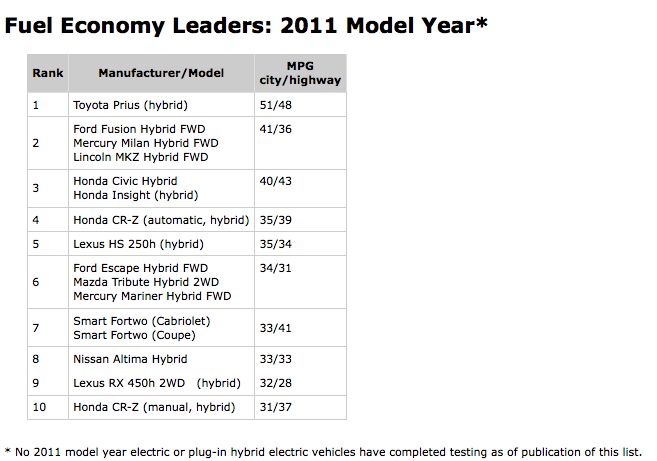#EPA
TTAC Rewind: Fuel Economy Skulduggery Is Nothing New
Hyundai and Kia being called on the carpet for inflated fuel economy claims is a great story for a slow Friday; everybody likes to see a rising star get taken down a notch, and the two Koreans have been the Cinderella story of the auto industry for the last couple of years.
Small wonder then, that in 2010, TTAC reported on some suspect fuel economy figures over in Detroit, similar to what happened with Hyundai/Kia. And nothing was ever done about it.
Hyundai And Kia Get Less MPG, Customers Get Their Money Back
Hyundai has long been in the top spots of America’s most fuel miserly vehicles. Over night, Hyundai will drop a few rungs down. Audited and found wrong by the EPA, Hyundai and Kia agreed to restate the fuel economy ratings on many of its cars. Cars in showrooms will be relabeled. Customers of more than a million 2011 through 2013 vehicles in the U.S. and Canada will receive debit cards.
How CAFE Killed Compact Trucks And Station Wagons
Close your eyes and imagine it’s 1979. A first-term Democratic president struggles with unemployment, malaise, high energy prices, and embassy trouble. The landscape of today looks like the landscape of then, but there’s one important thing missing: The compact pickup. Where did they go? The small pickup was an indelible symbol of America’s lowered expectations in the Seventies and Eighties. Now that crappy times are here again, where are the paper-thin truck beds and wheezy-but-indestructible four-cylinders to pull them?
Ford C-Max Kicks Honda Civic Hybrid From 3rd Place
Ford is attacking Toyota’s miserly image. The blue oval announced today that its 2013 C-Max Hybrid crossover gets better mileage than Toyota’s Prius V, Reuters says.
Piston Slap: To Test in 4WD…or Not?
Jonathon writes:
Hi Sajeev,
Long time reader, not a commenter though. I have simple situation, and a simple question. Last Friday my beloved, and owned from birth, 1995 Grand Prix GTP developed a head gasket leak. This is something I can, with father-in law help, tackle in the summer. However living in Northern Ontario, a driveway repair is just not an option right now. It’s time for a new ride.
Since all those years ago I did not give my wife (g.f. at the time) any option into the purchase, this time around it will be something we both are in love with. Sadly that leaves a V6 Mustang or the 2013 Genesis 3.8 out. Also we lost our niece at the beginning of the year in a highway car accident that killed three other teenagers (the quality of highway maintenance is now privatized and sub-par). Anyways, that has my wife eying a 4×4\awd even more then ever.
Top on her list is a 2012 Wrangler Sahara Unlimited (bare bones except auto & A\C). The mileage for this is 16\20. Our car, new, apparently was 16\24. From our sleepy little city to Toronto is ~360km. At the current 1.28\l, it would mean another $14 there and back for one of our escapes to the big city. So the question I have is, when the EPA tested the wrangler did they do it in 4wd, so that we could expect to see better mileage, or 2wd, and that is what we should expect?
Regards,
Jonathan
ps…anyone have any suggestions for a driveway mechanic preparing to replace a headgasket on a 1995 Pontiac 3.4 with DOHC?
Pumpcast Newsbreak: Ford And Toyota Sink To New Lows
Why Is Mazda Marketing a 58MPG Mazda3 SkyACTIV In Canada?
It was around April of 2011 when I noticed an ad in the Toronto subway for the 2012 Ford Focus, touting fuel economy of 59 MPG. I dwelled on that outrageous figure for a second, made a mental note to check if they were using Imperial MPG measurements and then promptly fell asleep on the train home and missed my stop. A Google search for the Ford Focus mpg claims didn’t yield anything from the Blue Oval, but did reveal a Google ad showing Mazda touting the same figures for its 2012 Mazda3 SkyACTIV, rated for 40 mpg on the highway. Even so, this would only be 48 mpg Imperial. So what gives? 10 mpg is not an insignificant difference.
Feds Predict The Future Of The Auto Industry, Foresee Chrysler Freefall, GM Stagnation
Reasonable minds can disagree about the wisdom of the auto bailout, but according to analysis by the EPA and Department of Transportation (based on data from the Department of Energy and auto forecasters CSM), the Government’s rescue of GM and Chrysler may not have been the best idea (at least from a market perspective). According to data buried in the EPA/DOT proposed rule for 2017-2025 fuel economy standards [ PDF here], Fiat-Chrysler is predicted to be the sick man of the auto industry by 2025, losing over half of its 2008 sales volume, while GM is expected to improve by only 3%, the second-worst projected performance (after Aston-Martin). In terms of percentages, even lowly Suzuki and Mitsubishi are projected to grow faster than The Mighty General. Ouch.
On the other hand, the proposed rule notes that data will be finalized before the final rule comes out. Besides, the agencies appropriately admit (in as many words) that projecting auto sales so far into the future is one hell of a crapshoot. Still, with the obvious exception of “Saab-Spyker” and with some skepticism about the projection’s optimism about overall market growth aside, these are not the craziest guesses I could imagine. Who knows what the future holds, but it certainly is a bit troubling that the government’s own data suggests the two automakers it bailed out may well have some of the weaker performances of the next 14 years. At least the Treasury could have sold off their remaining GM stock before this report was released…
EPA Releases 2017-2025 CAFE Proposed Rule
Over the last few days we’ve been discussing the implications of the growing gap between global oil demand and production, looking at the responses of a global automaker, a radical startup and the oil industry itself. And make no mistake, it’s an uncertain future out there… unless you’re selling cars in the US. In that case, your future just arrived, planned all the way through 2025. That is, if you think this proposed rule will survive four presidential elections and one industry-government “mid-term review.” Want to familiarize yourself with this pre-planned fuel economy future? All 893 pages await your perusal, in PDF format here. Or, hit the jump for a few broad strokes.
Ask The Best And Brightest: Which Automaker May Be Fudging Their EPA Numbers?
The Environmental Protection Agency’s fuel economy testing system is notoriously weak, relying on self-reporting for the vast majority of vehicles, and exhibiting vulnerabilities to “gaming.” But rather than attacking each others’ EPA numbers, automakers seem to have agreed that it’s best if everyone does their best to juice their own numbers and allows the imperfect system to limp on. But over at Automotive News [sub], we’re hearing what could be the first shots fired in a new war over EPA ratings, as Product Editor Rick Kranz reveals that an OEM is starting to complain about another OEM’s fuel economy ratings. He writes:
An executive of one U.S. automaker suggests there might be some sleight of hand going on and that the EPA is not catching the offenders.
The issue: There’s a noticeable difference between the mpg number posted on some cars’ window sticker and an analysis of the data submitted by automakers to the EPA.
Ruh-roh!
The Battle Of 62 MPG
Though the EPA won’t actually announce its 2025 CAFE standard until September, the California Air Resources Board’ insistence on a 62 MPG standard for ’25 has the industry’s analysts and talking heads in something of a frenzy. Smelling the smoke on the breeze, Automotive News [via AutoWeek] trots out a range of interpretations of the proposed 62 MPG standard, from the frightening to the apocalyptic. Cost increases per vehicle for a 62 MPG by 2025 standard are estimated by government agencies at $3,500 “at most,” while Alliance of Automotive Manufacturers reckons they’ll run “as much as $6,400.” Sean McAlinden of the notoriously industry-friendly Center for Automotive Research figures the market will have to shift to 64% plug-in hybrids, at a price increase of $9,970 per vehicle, while the AAM adds that 62 by 20205 “could cut car sales by 25 percent, costing the industry 220,000 jobs.” And the EPA seems to be listening to the rising chorus of grumbles, as the agency’s Margo Oge soothed the locals on a recent visit to Detroit with the words
We will be very mindful — and I underline ‘mindful’ — of the consumer throughout this process. Unless people buy these new clean cars and trucks, and buy them in large numbers, everyone loses.
But if CARB wants 62 MPG by 2025, it will get it from the EPA. Which means the real question is simply how much will the standard actually add to per-vehicle costs? Is the industry inflating its numbers in hope of a teaspoon of federal sugar to help the medicine go down? Is the 62 MPG standard really an industry killer?
Sticker Wars: Leaf Beats Volt. FTC Trumps EPA
The official MPG(e) ratings for Chevy’s Volt and Nissan’ Leaf have been out for a few days. Finally, The Nikkei [sub] noticed something: Nissan’s “all-electric Leaf has gained bragging rights in the U.S. market after garnering a higher fuel economy rating than the Chevrolet Volt.” Bragging rights bestowed courtesy of the U.S. government.
What's Wrong With This Picture: The 99 MPG Non Sequitur Edition
The EPA's Ten Most (And Least) Efficient 2011 Models
With the release of the EPA’s 2011 fuel economy guide comes this list of the EPA’s most fuel-sipping-est vehicles on the US market (EVs and plug-in hybrids excluded). For a list of the ten least-efficient vehicles on the market today, just hit the jump…
EPA Approves E15 Ethanol Blends For 2007 And Later Model Years, Automakers, Blenders And Auto Advocates Protest
Bloomberg reports that the Environmental Protection Agency has approved blends of up to 15 percent ethanol in gasoline for cars produced since 2007, handing a victory to pro-ethanol groups like Growth Energy. The EPA had previously capped gas-ethanol blending at 10 percent (E10), on fears that the higher percentage of corn-based ethanol could damage engines. But the approval of E15 hasn’t exactly made those fears go away. According to Credit Suisse analyst Robert Moskow
The approval of E-15 by the EPA won’t have a positive effect on [ethanol giant Archer Daniels Midland] in the near-term. Blenders remain reluctant to implement E-15 because it requires a separate pump and because the EPA has not absolved the blenders of potential legal liability from consumers.
And it’s not just blenders who are up in arms at the decision. Gas refiner Valero Energy, the American Automobile Association and the Detroit automakers (which had previously been pro-ethanol) are all against the increase to E15 in “normal gas.” All of which means E15 isn’t likely to show up at your neighorhood gas pump anytime soon.

























Recent Comments